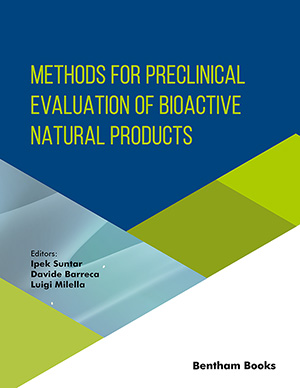Abstract
Aims: Characterization of antimicrobial metabolites of novel Streptomyces sp. UK-238.
Background: Novel antimicrobial drug discovery is urgently needed due to emerging multi antimicrobial drug resistance among pathogens. Since many years, natural products have provided the basic skeletons for many therapeutic compounds including antibiotics. Bioprospection of un/under explored habitats and focussing on selective isolation of actinobacteria as a major reservoir of bio and chemodiversity has yielded good results.
Objective: The main objectives of the study were the identification of UK-238 by 16S rDNA sequencing and antimicrobial metabolite fingerprinting of culture extracts.
Methods: In the present study, a promising isolate, UK-238, has been screened for antimicrobial activity and metabolite fingerprinting from the Himalayan Thano Reserve forest. It was identified by 16S rDNA sequencing. Ethyl acetate extract was partially purified by column chromatography. The pooled active fractions were fingerprinted by GC-MS and compounds were tentatively identified by collated data analysis based on Similarity Index, observed Retention Index from Databases and calculated Retention Index.
Results: UK-238 was identified as Streptomyces sp. with 98.4% similarity to S. niveiscabiei. It exhibited broad-spectrum antibacterial and antifungal activity. The GC-MS analysis of active fractions of ethyl acetate extract showed the presence of eighteen novel compounds, some with antimicrobial activity, belonging to four major categories- alcohols, alkaloids, esters and peptide.
Conclusion: The study confirms that bioprospection of underexplored habitats can elaborate novel bio and chemodiversity.
Keywords: Multidrug resistant, natural products, forest, Streptomyces, antimicrobial, metabolite fingerprinting.
[http://dx.doi.org/10.1038/ja.2012.27] [PMID: 22511224]
[http://dx.doi.org/10.3389/fmicb.2016.01295] [PMID: 27594853]
[http://dx.doi.org/10.1007/s10482-010-9460-2] [PMID: 20582471]
[http://dx.doi.org/10.1007/s13205-018-1556-9]
[http://dx.doi.org/10.1038/s41429-017-0012-0] [PMID: 29362461]
[http://dx.doi.org/10.1007/s00284-016-1183-9] [PMID: 28120024]
[http://dx.doi.org/10.3389/fmicb.2017.00877] [PMID: 28559892]
[http://dx.doi.org/10.1038/s41598-019-39592-6] [PMID: 30816228]
[http://dx.doi.org/10.1099/ijsem.0.000447] [PMID: 26297131]
[http://dx.doi.org/10.1186/s12866-018-1215-7] [PMID: 29996765]
[http://dx.doi.org/10.1016/j.micpath.2017.06.017] [PMID: 28647504]
[http://dx.doi.org/10.1128/JB.57.2.141-145.1949] [PMID: 16561658]
[http://dx.doi.org/10.1093/ajcp/45.4_ts.493] [PMID: 5325707]
[http://dx.doi.org/10.1128/AEM.70.3.1787-1794.2004] [PMID: 15006805]
[http://dx.doi.org/10.1099/ijs.0.038075-0] [PMID: 22140171]
[http://dx.doi.org/10.1016/B978-1-4832-3211-9.50009-7]
[http://dx.doi.org/10.1093/molbev/mst197] [PMID: 24132122]
[http://dx.doi.org/10.1063/1.3653552]
[http://dx.doi.org/10.1007/978-0-387-21609-6]
[http://dx.doi.org/10.1099/ijs.0.059774-0] [PMID: 24505072]
[http://dx.doi.org/10.4103/0973-1296.66930] [PMID: 20931074]
[http://dx.doi.org/10.1155/2013/790580] [PMID: 23781160]
[http://dx.doi.org/10.1039/C8RA00820E]
[http://dx.doi.org/10.1007/s40011-015-0619-5]
[http://dx.doi.org/10.3390/ma10080947] [PMID: 28809799]
[http://dx.doi.org/10.1590/S1517-83822014000400035] [PMID: 25763048]
[http://dx.doi.org/10.5530/pj.2017.5.100]
[http://dx.doi.org/10.3390/app7050443]






























